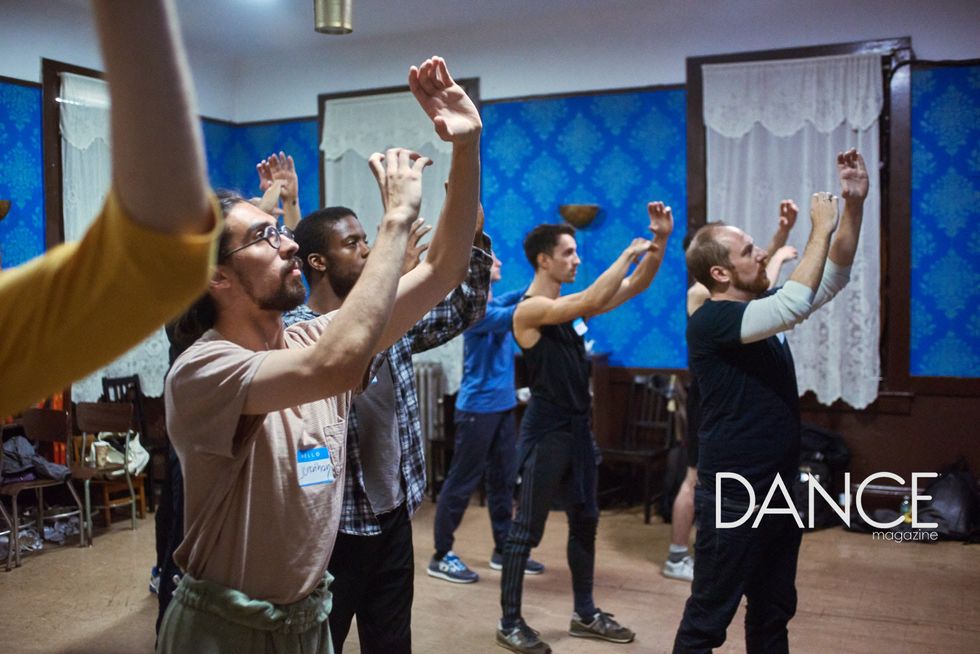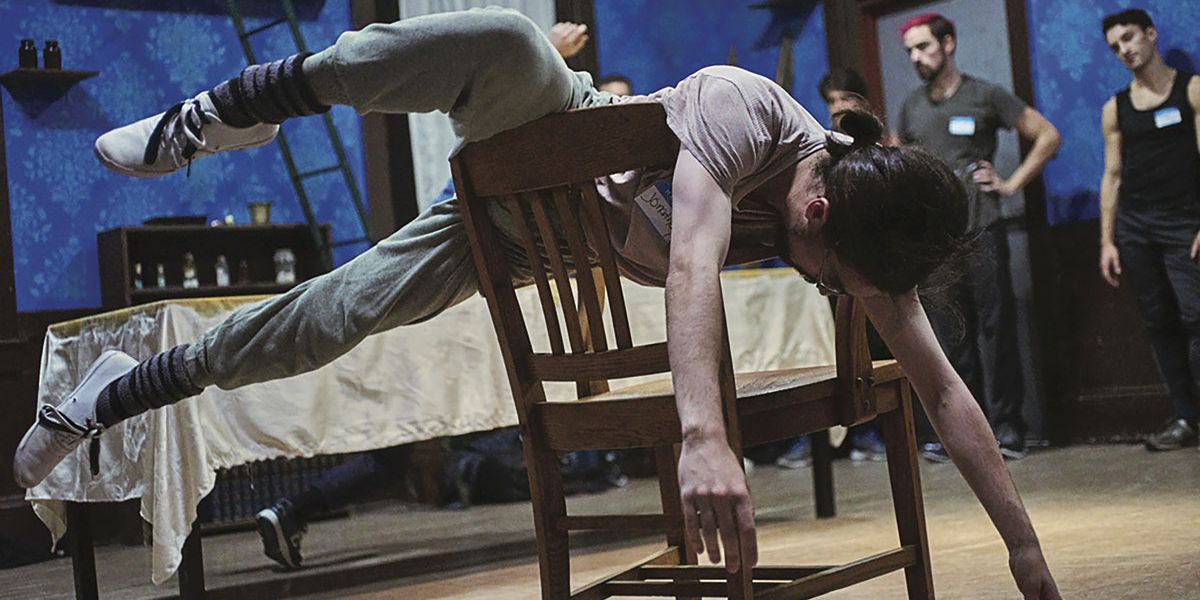Weird Is Good: Inside an Immersive Theater Audition with Third Rail Projects
“Auditions are weird anyway,” says Zach Morris, co-artistic director of Third Rail Projects. “So let’s double down on the weirdness.” It’s mid-October, and Then She Fell, the company’s wildly successful immersive theater production riffing on Victorian hospital wards and Lewis Carroll’s Alice books, is looking for one male performer to fill a very specific role. (The directors never state exactly which one—”No spoilers!” they joke.) They’ve whittled down the pile of applications to the 12 men currently warming up in the rooms of the Kingsland Ward, a century-old building at St. John’s Church in Brooklyn, New York. “We look for certain experiences that are translatable: That they’ve been working at this craft professionally, that they’re looking for the next thing that they’re hungry for,” says Julia Kelly, a current cast member and the rehearsal director.
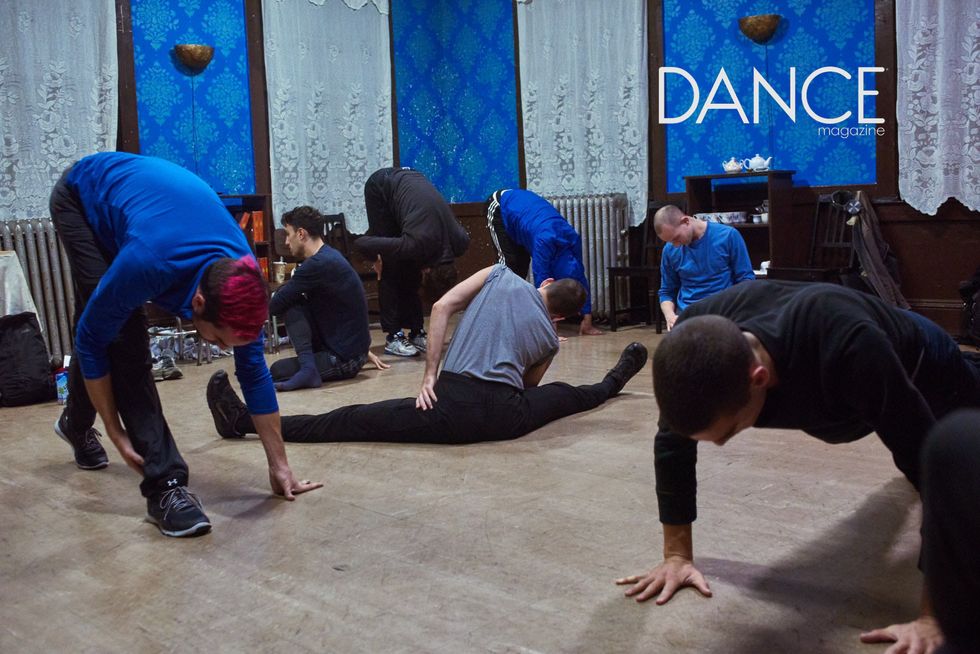
Dancers warming up before the audition. All photos by Jim Lafferty.
Solid technique and the ability to pick up movement quickly are the bare minimum of what’s expected from potential performers. In immersive theater, the cast might also have to act, guide audience members through nontraditional spaces and improvise in-character reactions to an unpredictable audience every show. In today’s audition, the dancers are being assessed on much more than their dancing abilities.
As 10 am rolls around, the men are handed name tags instead of numbers and are asked to circle up and introduce themselves briefly. “If we’re doing our jobs right, everyone is comfortable,” Morris says, explaining that they prefer to think of these auditions as workshops. For Then She Fell, they want to take the performance out of performing, focusing instead on completing a series of tasks that define each character—a necessary skill when your audience is merely a foot away. “It really comes down to, How simple can you be? How completely present can you be? Because then you can dial up to these other things,” co-artistic director Tom Pearson says later.
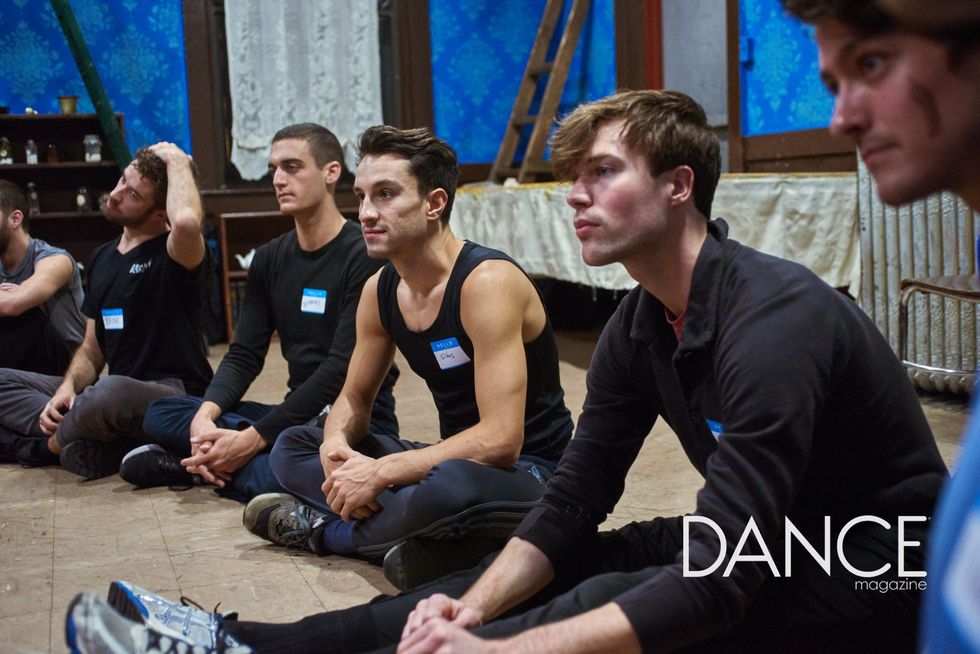
They begin with core phrasework, Morris demonstrating a gesture series pulled from the Doctor character that mimes the handling of medical equipment—precise, efficient, upright. Halfway through, Marissa Nielsen-Pincus, an original Alice in the show and current assistant director, takes over, shifting the phrase into something that sways, flows and initiates from the core. The character is meant to be watching her own reflection, but Nielsen-Pincus encourages the dancers not to be too focused on making the correct shapes.
They break into groups of four to show the Doctor/Alice phrase, and it’s clear when a dancer has missed a detail, and, more importantly, if they’re actually touching or seeing what they’re directed to. Adding anything extra to the deceptively simple phrase breaks the spell instantly. “I was just trying to experience it rather than show it,” says Nicholas Grubbs, currently a dancer with LoudHoundMovement who is auditioning for a Third Rail show for the third time. “When you have that heightened adrenaline in an audition, it’s so easy to over-perform, but it’s really about the task.”
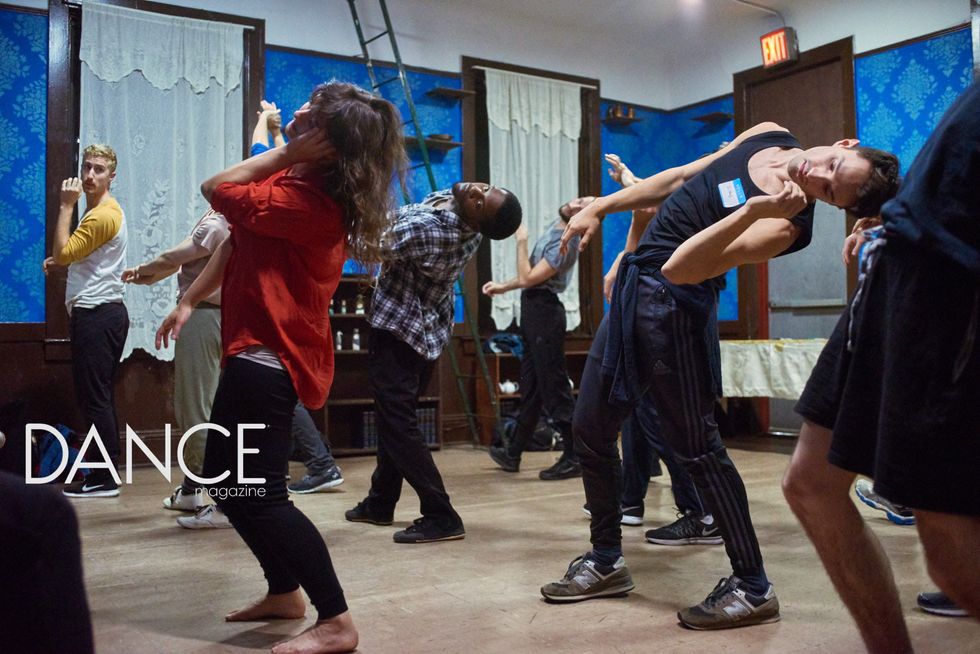
Marissa Nielsen-Pincus leads the men through a phrase based on Alice.
After a few rounds, the directors split the dancers into two groups: Half stay with Pearson in a large room while half leave with Morris. The six who remain are confronted with a large table and two chairs, one child-sized. They’re tasked with exploring each of the “environments,” improvising with each for 30 seconds to a minute. “Don’t be afraid to be completely literal,” Pearson says. “Gently walk yourself from the obvious to discovery.” He continues to give cues as the dancers explore one at a time. The men cram themselves into too-small spaces, experiment with how much of their weight can be supported, and play with the surfaces and negative space of the architecture. “I was trying to keep myself in that mentality of being inquisitive as opposed to doing a trick,” says Kyle Castillo, a 27-year-old freelancer who moved to New York City from Los Angeles about a year ago.
Just when they seem to have found a groove, Pearson begins adding limitations, asking them to spend only 15 seconds per environment and to follow a simple list of verbs as a score: pour, fill, spill, swirl, rise. There are a few nervous chuckles from the group, but the men flow through the improvisation, a smooth intensity overtaking the exploratory atmosphere.
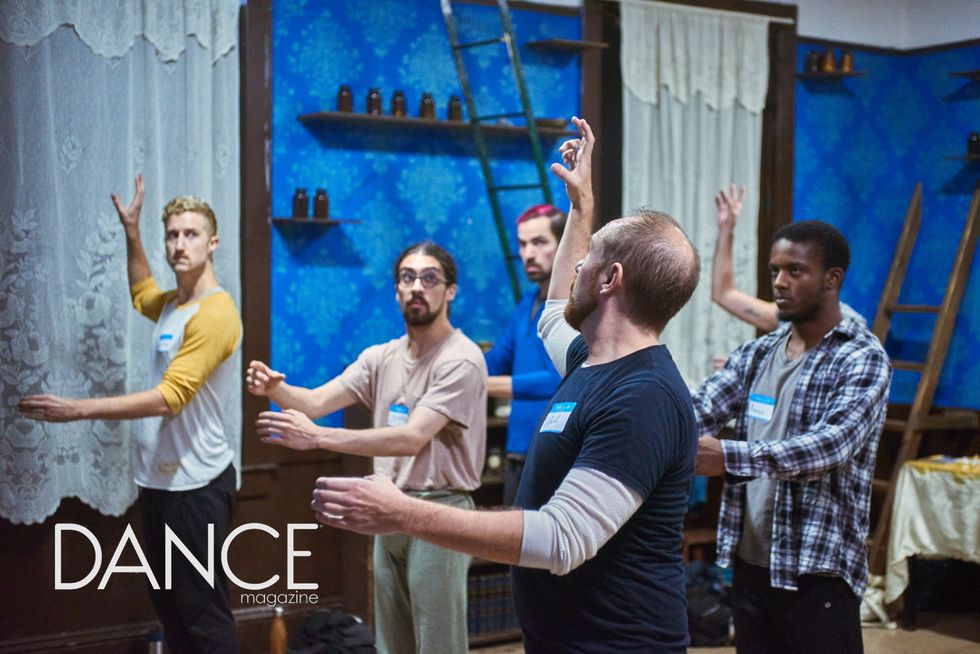
“That was beautiful!” Pearson says. And then he gives them more notes before they start again. Kelly chimes in, “Even when you’re quick, be even more awake.” Nielsen-Pincus slips back into the room and requests that the dancers remember to make contact with more than just their hands and feet: “Can you still keep all of that surface area?” she asks. The new ideas flow almost constantly, the various directors layering thoughts across each other’s points to shade the work with more depth.
Castillo quickly learns how to sift through input from several people. “When you have directors giving you multiple points of view, it’s about trying to find the subtleties,” he says. But in an audition setting, that can be a lot to process. “I’m an overthinker,” Grubbs says. “So every time, I’m like, Okay, just pick two of these things to focus on—otherwise you’re going to be all over the place!”
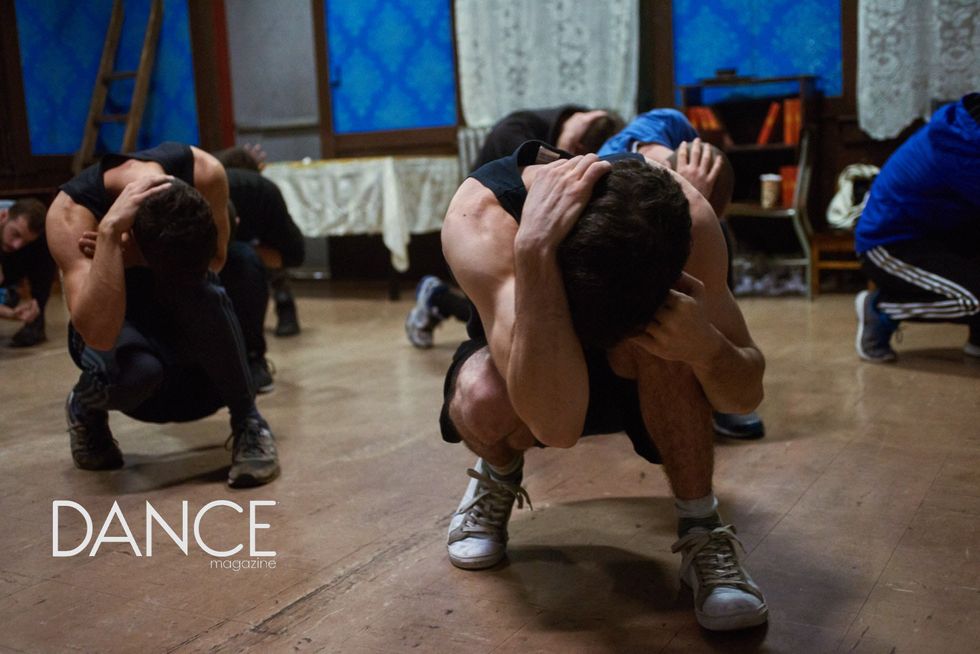
Meanwhile, in a small room around the corner, Morris takes the other group through a monologue from the Doctor character. After handing out copies and explaining the tone and the action, one by one the men take a seat in a small alcove and read the text. They speak as though to someone out of sight but occasionally glance over to Morris, who is seated just to their right. “Throughout the audition process I was getting further away from what was comfortable,” Castillo says. “I would never categorize myself as an actor by any means, so it was very foreign.”
The performers in Then She Fell have to be as capable of communicating through speech as they are through movement. Again, the emphasis is on simplicity. “Like a lot of the movement practice, it’s really about listening to your audience and being responsive,” says Morris later. Pearson adds, “You have to be the type of performer who can attune to what the scene needs. It’s a different kind of virtuosity.”
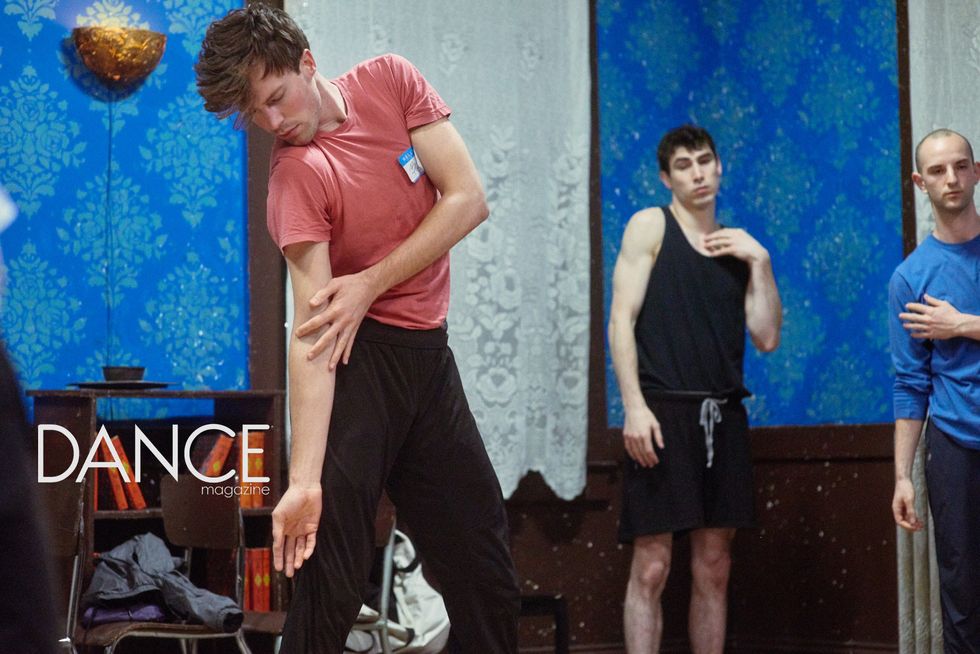
After all of the men go through both the text and the improvisation, they circle up with Morris to recap the day. The directors reiterate that they’re filling a very specific role at the moment, but they love getting to know who is working in New York City’s contemporary dance scene—and to reach out when they have performances. “I’ve always wanted to treat auditions like a workshop and then lost it halfway through,” Castillo says later. “But this time I felt it.”
“It’s a very difficult show to be in,” Grubbs muses. “They want people they can trust.” Both he and Castillo are among those to be called back; Castillo will ultimately book the job. “It was really rewarding to realize that there are companies out there who understand that you are a human, not just a number they’re trying to fit into their company,” Castillo says. “They are really interested in exploring who you are as a performer and an artist.”
